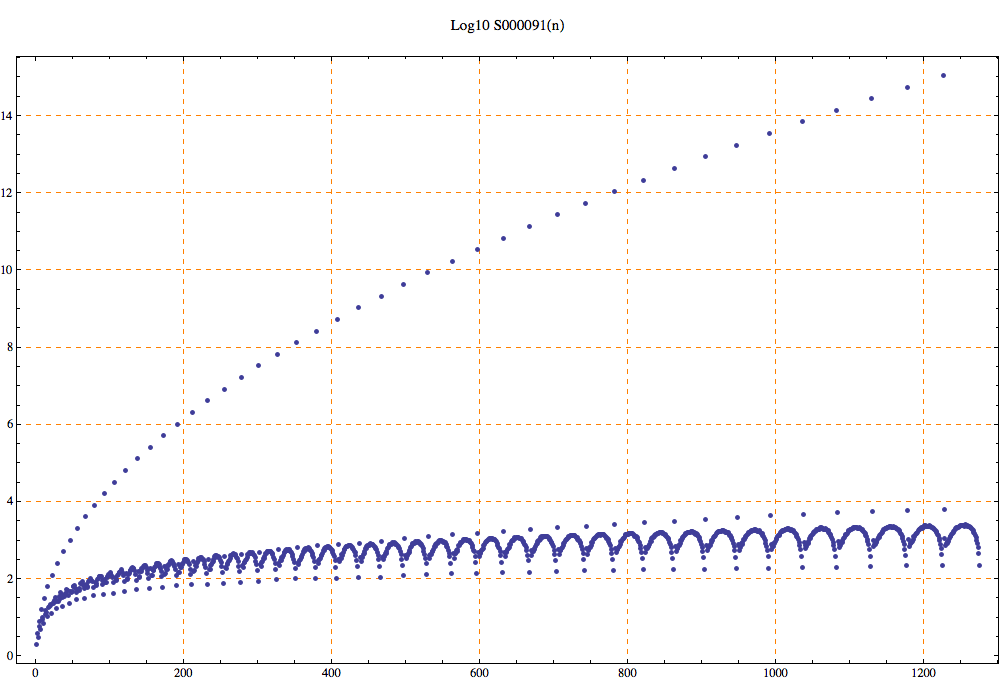The matrix whose n-th row consists of increasing numbers whose largest prime factor is prime(n).
2, 4, 3, 8, 6, 5, 16, 9, 10, 7, 32, 12, 15, 14, 11, 64, 18, 20, 21, 22, 13, 128, 24, 25, 28, 33, 26, 17, 256, 27, 30, 35, 44, 39, 34, 19, 512, 36, 40, 42, 55, 52, 51, 38, 23, 1024, 48, 45, 49, 66, 65, 68, 57, 46, 29, 2048, 54, 50, 56, 77, 78, 85, 76, 69, 58, 31
1
The matrix is read by antidiagonals.
T. D. Noe, Plot of 50 rows
T. D. Noe, First 50 rows
The first 9 rows of the matrix, which is read down and to the left, are
2, 4, 8, 16, 32, 64, 128, 256, 512
3, 6, 9, 12, 18, 24, 27, 36, 48
5, 10, 15, 20, 25, 30, 40, 45, 50
7, 14, 21, 28, 35, 42, 49, 56, 63
11, 22, 33, 44, 55, 66, 77, 88, 99
13, 26, 39, 52, 65, 78, 91, 104, 117
17, 34, 51, 68, 85, 102, 119, 136, 153
19, 38, 57, 76, 95, 114, 133, 152, 171
23, 46, 69, 92, 115, 138, 161, 184, 207
(Mma) nn = 11; t = {Table[2^n, {n, nn}]}; Do[AppendTo[t, Select[Range[nn^3], FactorInteger[#][[-1, 1]] == p &, nn]], {p, Prime[Range[2, nn]]}]; t = Flatten[Table[t[[j, i - j + 1]], {i, nn}, {j, i}]]
Cf. A033286 (diagonal terms), A125624 (transpose).
nonn,tabl
T. D. Noe, Jun 16 2014
